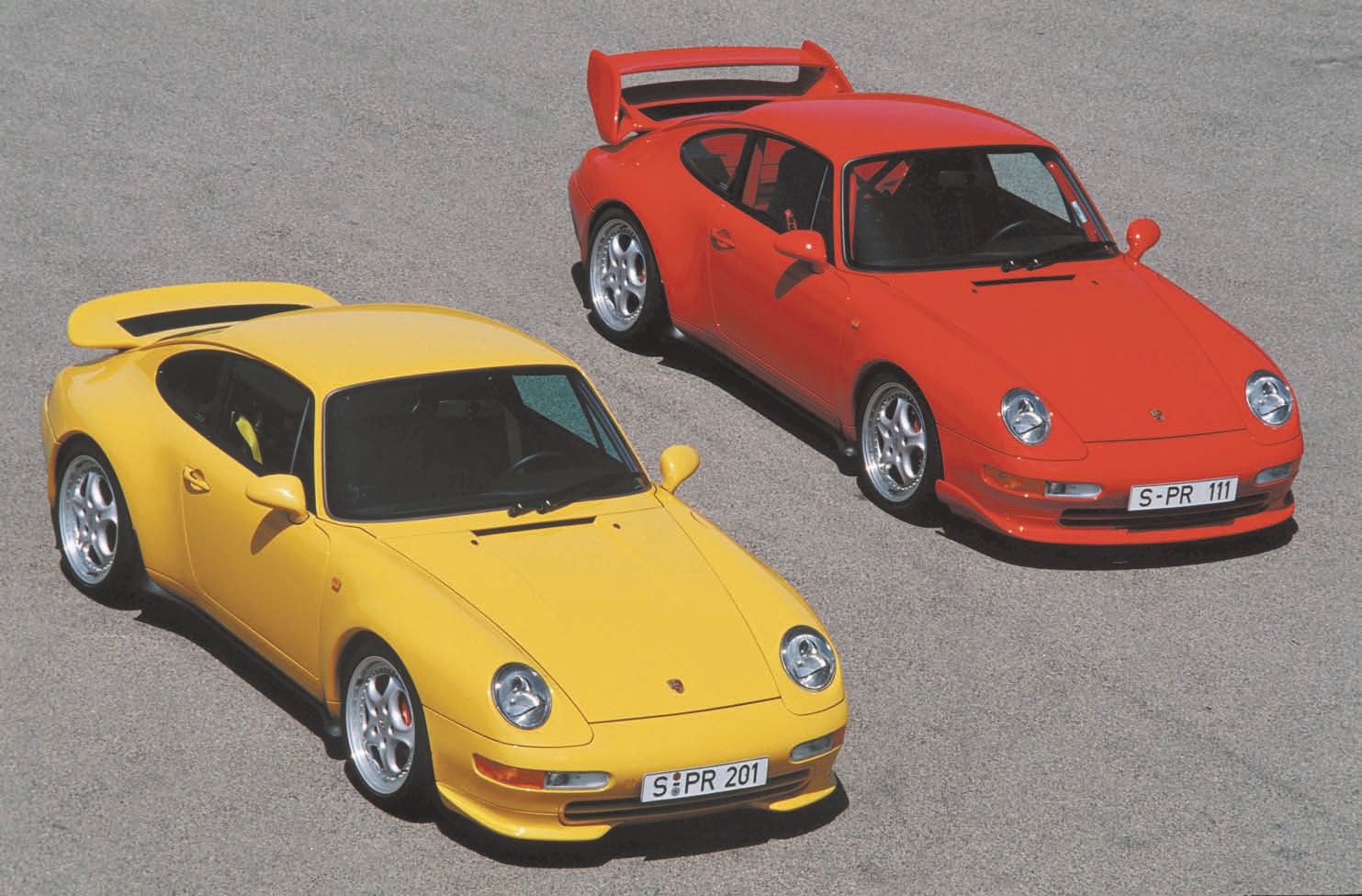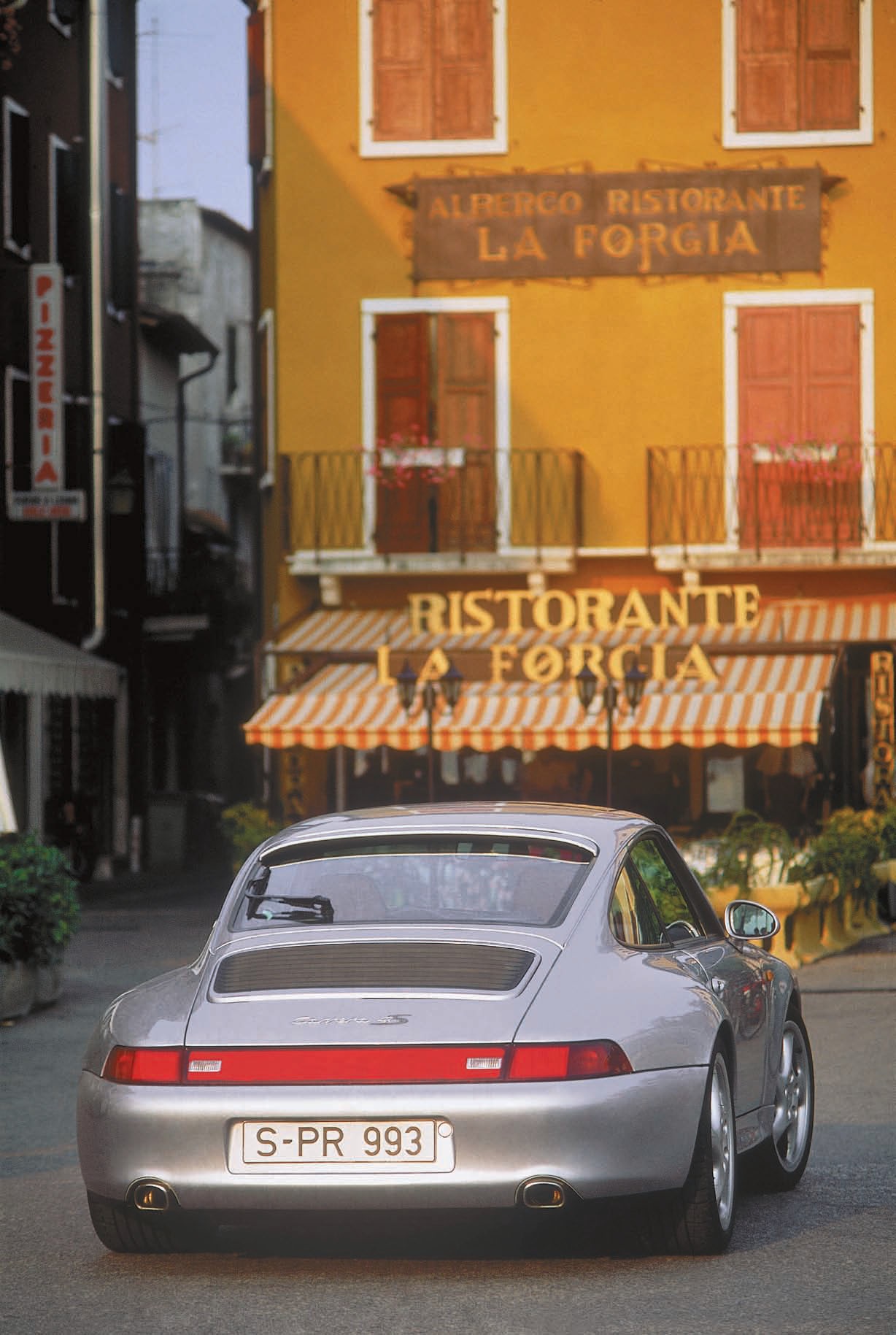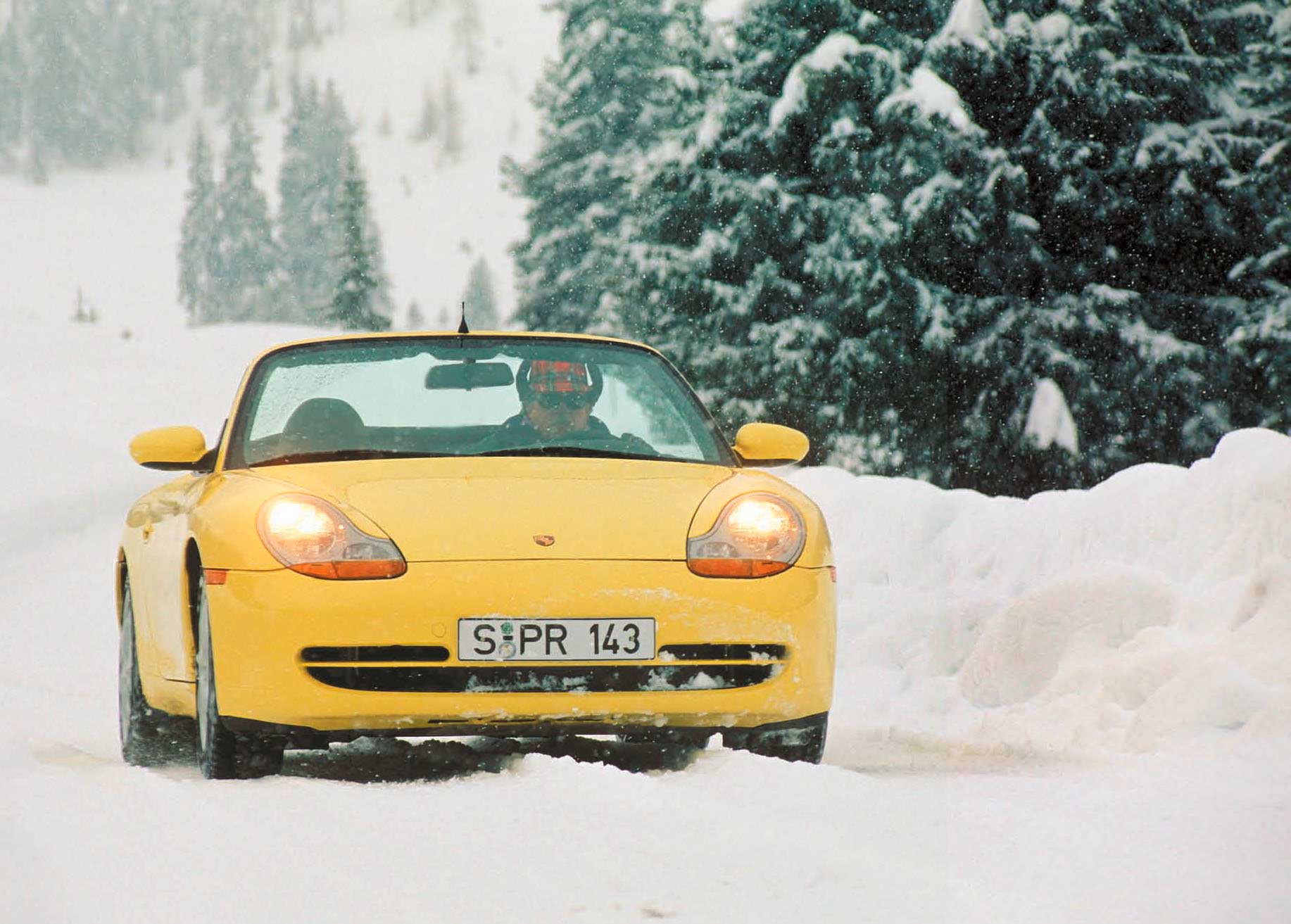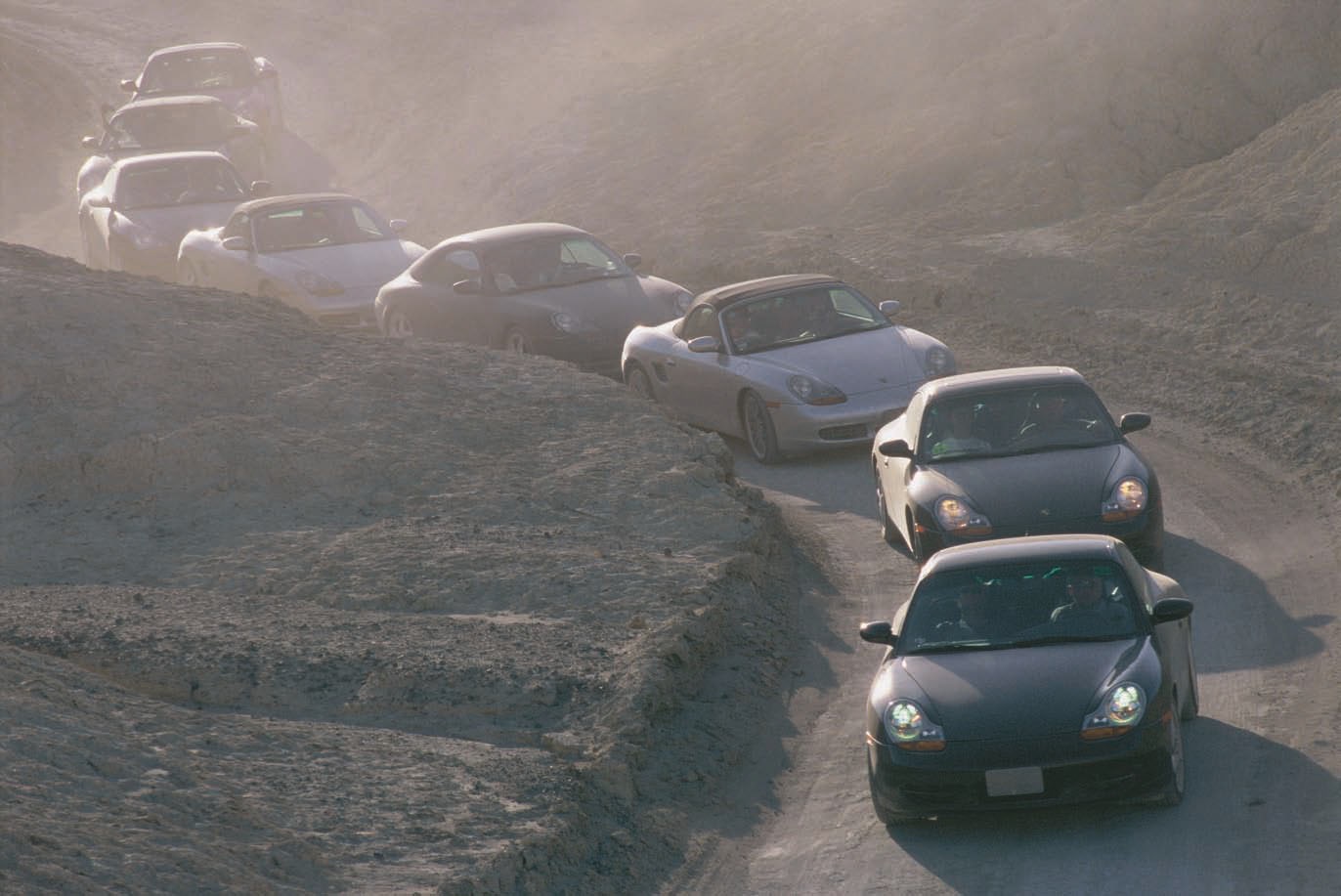Associated albums
Porsche 911 50 Years





EVOLUTION VERSION 2.0
FROM AIR TO WATER THE FIFTH GENERATION: 996 ”In 1991, we had one big problem in the company,” Horst Marchart recalled in an interview in 2012. Marchart had just joined the Porsche board. He had started as a design engineer in the engine department in 1960, and from 1972 till 1988, he served as a leader for external projects at Weissach. In 1988, after Helmuth Bott left, Ulrich Bez pulled Marchart back into Porsche’s mainstream, making him responsible for the complete development for cars. He supervised 350 people. He had watched this “one problem” as it emerged, sometimes seeing it from the perspectives of Porsche’s outside clients. “The 944/968 was an excellent car,” Marchart acknowledged, “but no one said it was a true Porsche. Next was the 928—the original concept to replace the 911. This split the company—one side was for the 911. The other side was for the 928/924/944. It always made a competition inside the company. And outside the company, it was a competition of appearance—the 911 was the true Porsche and the 928 was a Porsche, but not the true Porsche.” When Marchart joined the board, Wendelin Wiedeking gave him the task of solving the one big problem, and the others that grew from it. “We had three products with no common parts,” Marchart said. “My job was to reduce the company to two products with a lot of parts similarities. And it was my idea to use the same face for both cars to give the identification equally. And with the Boxster and the 911, nearly the same from the nose to the front of the doors, we show it is possible for Porsche to build two cars that are both true Porsches.” One more issue had been present from the start. Fuhrmann had attempted to resolve it with his 924 and 928, but it eventually became clear these were not the best solutions to a real problem. “Our next big situation was to stop the air-cooled engine. Nobody in the world had air-cooled engines except us. With all the regulations in the various countries, all that we had to respect, we had these special engines that needed special parts unlike any other manufacturer. We could only have two valves. We needed a special cooling and heating system, different from everyone else in the world. It took a lot of money to make special systems since we could not share technology with anyone else,” Marchart said. He considered making immediate changes. The 964 was ready for release, but among the gasps heard during finance man Branitzki’s suggestion to keep that car around forever were Marchart’s 350 engineers with a much clearer view of coming safety and emissions standards. The development of 993 began even before Branitzki spoke those words. “We made studies and investigations to make the 993 water-cooled. But we had special conditions. We would have needed a new heating and cooling system for a water-cooled engine, and we didn’t have the room in the car body. So we decided to let the 993 stay with the air-cooling and we would start fresh with the next car, the 996. “In the meanwhile, we also had made the studies for a four-wheel steering system, which we liked. But we could find no partners for it. Bosch asked for 60,000,000 DM at that time (about $40 million) to develop the electronics and cooperate with us in development. At that time we had no money in our pockets, so that made the decision to stop that project easy but disappointing. But that was the reason why, in the 993, we had the subframe. We had started to develop the system, and it required the subframe. Then Bosch needed too much. The comfort was excellent. We decided we will stay with the subframe and stabilize the rear axle. And I think it made us the most comfortable 911 ever, in the 993.

Previous Page
Page 18 of 32
Next Page